Royal College, Colombo
Coordinates: 6°54′16″N 79°51′40″E / 6.90444°N 79.86111°E
| Royal College Colombo | |
|---|---|
|
| |
| Location | |
|
Colombo Sri Lanka | |
| Information | |
| Type | National |
| Established | 1835 |
| Founder | Sir Robert Wilmot-Horton, 3rd Baronet |
| Principal | B.A.Abeyratne |
| Grades | Class 1 - 13 |
| Gender | Boys |
| Age | 6 to 19 |
| Enrollment | 8000 |
| Colour(s) |
Blue and gold |
| Song | School of Our Fathers |
| Publication |
Royal College Magazine, The Royalist |
| Former pupils | Old Royalists |
| Website | www.royalcollege.lk |
Royal College (Sinhala: රාජකීය විද්යාලය Rajakiya Vidyalaya) (Tamil: றோயல் கல்லூரி Royal Kalloori) (also referred to as Royal College Colombo,[1][2] Royal College, Colombo 7,[3][4] Colombo Royal College,[5][6] or simply as Royal[7][8]) is a selective entry boys' school located in Colombo, Sri Lanka. Started as a private school by Rev Joseph Marsh in 1835,[9] it was established as the Colombo Academy by Sir Robert Wilmot-Horton in January 1836, the first government-run secondary school for boys[10] in the island.
Royal College is considered to be a leading public school in Sri Lanka[11] and is often referred to as the "Eton of Sri Lanka".[7] The school was founded in the British public school tradition, having been named the Royal College Colombo in 1881 with royal consent from Queen Victoria, and it was one of the first schools to be designated as a national school by the Sri Lankan government in the 1980s. As a national school it is funded by the government as opposed to the provincial council providing both primary and secondary education. The school was selected as "one of best innovative colleges" in the world by Microsoft in 2009.[12]
Students of Royal College are known as Royalists[13][14] whilst past pupils are known as Old Royalists.[15] The school has produced many distinguished alumni, among whom are presidents of two countries,[16] a sultan,[17] and three prime ministers.[16]
College
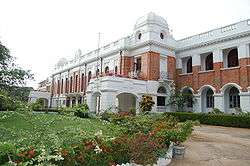
Location
Situated in a quiet residential suburb of Colombo known as the Cinnamon Gardens, it occupies an area of 37 acres (150,000 m2) (with the Sports Complex) along the Rajakeeya Mawatha, bordered by Reid Avenue to the east; Kumarathunga Munidasa Mawatha (formally Thurstan Road) to the west and to the south its former premises which now houses Department of Mathematics of the University of Colombo.
Administration
The college is funded by the Ministry of Education, which appoints its principal. The principal is the head of the administration of the college and is assisted by a vice principal. The school is divided into three sections: the primary school (the former Royal College Preparatory School), middle school and the upper school, each coming under a deputy principal (the head of the primary school is known as the headmaster/headmistress). The college educates close to 9100 students in both secondary and primary education. Administration of the college hostel is carried out by the warden under supervision of the principal and is assisted by a sub-warden.
Since its establishment, the main medium of education had been English; however with Sinhala becoming the official language along with Tamil, the medium of education was changed to Sinhala and Tamil. Since 2002 English has been reintroduced as a medium of education at the college. Students may select one of the three languages in which to conduct their studies.
Admission
Admission to the school is very competitive. It gets its highest number of applications for admission to grade 1 and the best 250 students from all over the country enter the school in year 5 via the grade 5 scholarship examination.[18]
Grounds

The school is located on 37 acres (150,000 m2) where the primary school, the middle school and the upper school are located. It is equipped with lecture halls, science and computer laboratories, and auditoriums. This includes the College Hall and the Navarangahala, a national theatre. The school hostel is located within the school grounds and it accommodates students from outside Colombo, with around 230 hostelers.
Sport plays a major part in Royal College's activities. The school's facilities include a swimming pool,[19] cricket and athletics grounds, tennis courts, basketball courts, and indoor cricket nets within the school premises. The Royal College Sports Complex and the rugby grounds are located a short distance from the college. The international standard sports complex, built in 2000, hosts national and school sporting events all year round.
War memorial
Situated in front of the main building, between the center Boake Gates and the College Main Hall, is the memorial to Old Royalists who died in the two World Wars and the Sri Lankan Civil War.
Another memorial plaque is displayed in the entryway to the Navarangahala, bearing the names of 47 Old Royalists who were killed in action in the civil war.[20] The first War Memorial Panel of the college was unveiled in the second term of 1933, by Sir Graeme Tyrrell, Chief Secretary of Ceylon commemorating Old Royalists who had died or were decorated during the Great War.
History
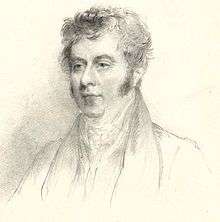

In 1835, Rev. Joseph Marsh started a private school at the back verandah of the church called the Hill Street Academy for twenty students from the upper class community situated at Hill Street, Pettah.[21]
The following year in 1836, Sir Robert Wilmot-Horton, the British Governor of Ceylon, based on the recommendations of the Colebrooke Commission, established the Colombo Academy,[22] an English public school modeled on Eton College, with Marsh continuing as headmaster on government pay.[23] It was the oldest public school on the island and had the governor as its patron.[24] It gave the children of leading Ceylonese an education which would make them fit to be citizens of the British Empire and served as the principal public school and a model for other government schools that were to be built in Ceylon.[25] In 1836 the school was moved to San Sebastian Hill, Pettah, (prior to which it was at Maradana, next to Hulftsdorp); it would stay there for another 75 years before being shifted to Thurstan Road. Even though the college had close ties to Anglicanism in its early years, since 1836 it has remained a secular school.
In 1859 the Queens College, Colombo was established as the first institution of higher education in Ceylon. Affiliated to the University of Calcutta, it prepared students from the Colombo Academy for entrance examinations of English universities.[26] In 1865 the Morgan Committee of inquiry into education recommended that it be reorganized and that scholarships should be awarded to study at the University of Oxford,[22] and as a result in 1869, Queens College was amalgamated with the Colombo Academy.[27]
The first hostel of the Colombo Academy was established in San Sebastian in 1868, establishing it as one of the first boarding schools in Ceylon.
In 1881 it was renamed Royal College Colombo with the royal consent of Queen Victoria. The Gazette notification giving Her Majesty's approval to change the name of the school appeared on July 31, 1881. The same year the first cadet battalion in Ceylon was formed at the College, attached to the Ceylon Light Infantry. The Royal College Union was formed in 1891 as the first alumni society in the country.
In 1911, work commenced on a new building for the school on Reid Avenue. On November 1911 during construction of this building it was hit by an aircraft that was trying the establish the record for the first flight over Ceylon in November 1911.[28][29] On August 27, 1913 the school was moved to thin new building at Reid Avenue (which is now the main building of the University of Colombo).[30] Ten years later on October 10, 1923, the school moved, this time to the newly constructed Victorian styled building further down Reid Avenue, which it continues to occupy. This move was due to the suggestion made by a higher education committee in 1914, that Royal College should be converted into a University college. Due to the objections made by past pupils of the Royal College Union, especially by the speeches made by Frederick Dornhorst, KC, the then Governor of Ceylon, Lord Chalmers instead created a separate University College,[31] University College Colombo, at the school's former premises which became the University of Colombo in the later years.
With the introduction of free education in Ceylon in 1931, Royal stopped charging fees from its students, thus proving education free of charge to this day.
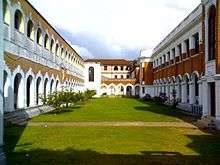

In 1940 the school was again on the move this time due to the onset of World War II. The school was ordered to move out and the British Army moved in, establishing a military hospital in the school buildings by 1941 and later covering it into a garrison. Principal E.L. Bradby made sure that education was carried on unhindered by moving the students into four private villas (known as bungalows in Ceylon) at Turret Street, Colombo: the Turret House, Carlton Lodge, Sudarshan House and Firdoshi House. In 1942 the 1-3 forms were shifted to Glendale bungalow at Bandarawela in the hill country.
Following a decree from the State Council of Ceylon in 1945, religious studies were started at the school.
In 1945, after the war ended, the school was relocated to its old home on Reid Avenue, Colombo, and the Hill School closed down.
In August 1977, the Royal Preparatory School was amalgamated to Royal College forming the school's primary school. With it came the country's only national theatre at the time, the Navarangahala.
Five years earlier on May 22, 1972, the members of the House of Representatives of the Dominion of Ceylon had met at the Royal Primary School Hall (Navarangahala) and enacted the Republican Constitution that established the Republic of Sri Lanka.[32]
School traditions

The college's motto is "Disce aut Discede", meaning "Learn or Depart" in Latin. The motto is associated with the high academic standard maintained at the school for over 175 years. The first mentions of the motto appeared during the tenure of Principal George Todd (1871–1878). "Floreat", meaning "flourish" in Latin, has been a motto associated with school since the founding of the Colombo Academy in 1836. It is derived from "Floreat Etona", the motto of Eton College on which the academy was modeled on at its formation.
College song
The college song is "School of Our Fathers", which is sung at the start of the school day and on important occasions. The words of the song were written by Major H.L. Reed, a principal of the school in 1927. The music was later revised by S. Schmid.
In 1968, a shorter version of the college song in Sinhala was composed on the instructions of the principal by the same people who composed the first song (Messrs W.A. Wickramasena and S.J.F. Dissanayake). It is sung at the end of the school day.
Prefectorial system
In addition to the teachers, four categories[33] of senior boys are entitled to maintain school discipline. Boys who belong to any of three categories of prefects wear a silver college crest on their all-white uniform.
- Senior Prefect: A senior prefect is a member of the most senior prefectorial group of Royal College: The Prefects' Council. Selected based on the criteria of academics, co-curricular and extra-curricular, senior prefects are appointed on a probationary basis after completing the final exams at school (GCE Advanced Level). Of these only a handful are appointed as Senior Prefects. Since they have completed their final examinations, they are senior than any other student of the college. Hence their disciplinary powers extend to all students of Royal College. And they effectively stay another year at school, monitoring and supporting all its academic, co-curricular and extra-curricular activities in general. From amongst the Senior Prefects are chosen the Head Prefect to lead all prefects of the college, and the Prefects' Top Board, which consists of the Head Prefect (HP), the Senior Deputy Head Prefect (SDHP) and three or four Deputy Head Prefects (DHP). Notable head prefects include: J. R. Jayewardene, Sepala Attygalle, Ranjan Madugalle and Neville Kanakeratne.
- Steward: selected from students in grade 12, they assist the senior prefects to exercise discipline in Upper School (grades 10, 11).
- Junior Prefect: selected from students in grade 9 (grade 8, until 1998), their disciplinary powers are limited to the students of the Middle School (grades 6-9).
- Primary Prefect: selected from students in grade 5, their disciplinary powers are limited to the students of the Primary School (grades 1-5).[34]
Houses
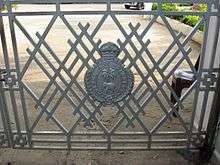
The students are divided into five houses. Formally four houses were established in 1918 by Principal Hartley with the names Cinnamon Gardens, Bambalapitiya North and South, and Colpetty. They were renamed in 1921 by Principal Major H. L Reed with names derived from past headmasters and principals of the college. In 1970 the fifth house was established in memory of Principal Reed. The houses are led by House Captains, and compete to win the inter-house games and house colours are awarded winners. The houses are:
- Hartley House
- Colours: pink and blue
- Established: 1918
- Harward House
- Colours: pink and grey
- Established: 1918
- Marsh House
- Colours: pink and brown
- Established: 1918
- Boake House
- Colours: red and black
- Established: 1918
- Reed House
- Colours: red and white
- Established: 1970
Awards
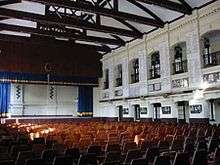
There are 165 endowed prizes and awards. The College Main Hall carries the names of those students who have won the Panel Prizes. The most coveted prize at Royal is the Dornhorst Memorial Prize, awarded (since 1930) to the most popular student each year on the basis of votes, in memory of Frederick Dornhorst, KC, followed by the Lalith Athulathmudali Memorial Prize for the most outstanding Royalist of the year. The Turnour Prize (awarded since 1846) is the oldest of the panel prizes. These are awarded at the prize-giving under the patronage of the President of Sri Lanka (earlier under the patronage of the Governor of Ceylon).
The Royal Crown, the most prestigious award a sportsman can achieve at Royal, is awarded each year at Colours Night to a sportsman who has made outstanding achievements in his field of sports. Colours are awarded to other players who have made significant contributions in the sporting arena.
Scholarship and prizes
| Prize | Year of Institution |
| Turnour Prize | 1846 - |
| Senior Mathematical Prize | 1846–1934 |
| Shakespeare Prize | 1870–1932 |
| English University Scholarship | 1870–1926 |
| Lorensz Scholarship | 1876 |
| Director's Prize | 1883–1921 |
| De Soysa Science Prize | 1893 |
| Sir James Peiris Memorial Prize | 1905 |
| Donald Obeyesekere Prize | 1912 |
| F Dadabhoy Memorial Prize | 1922 |
| The Governor's Prize | 1922–1947 |
| C M Fernando Memorial Prize | 1925 |
| Harward Memorial Prize | 1926–1963 |
| Steward's Prize | 1929 |
| Dornhorst Memorial Prize | 1930 |
| Gate Mudaliar R E Gooneratne Memorial Prize | 1933 |
| G L Rupasinghe Memorial Prize | 1934 |
| Dr F E Weerasooriya Memorial Prize | 1934 |
| Canon Lucien Jansz Memorial Prize | 1934 |
| Adigar A Sellamuttu Prize | 1935 |
| Ruby Andries Memorial Prize | 1935 |
| Stubbs Prize | 1935–1970 |
| Sir Edward Denham Memorial Prize | 1939 |
| Dr C A Hewavitarane Memorial Prize | 1942 |
| Cecil Perera Memorial Scholarship | 1944 |
| The Governor General's Prize | 1947–1972 |
| Peter De Abrew Memorial Scholarship | 1948 |
| Dr H L H De Mel Memorial Prize | 1948 |
| Earle De Zoysa Memorial Prize | 1952 |
| P U Ratnaunga Prize | 1952 |
| J N Jinendradasa Memorial Prize | 1954 |
| E W Perera Memorial Memorial Scholarship | 1954 |
| Dudley K G De Silva Prize | 1957 |
| R H Wickramasinghe Memorial Prize | 1957 |
| Tissa Wickramasinghe Memorial Prize | 1963 |
| Amal De Mel Memorial Prize | 1966 |
| Harsha Panditha Gunawardena Memorial Scholarship | 1967 |
| T D Jayasooriaya Memorial Prize | 1970 |
| Mudaliyar L C Wijesinghe Prize | 1970 |
| The President's Prize | 1973 |
| Omeon Mendis Memorial Scholarship | 1973 |
| 1927 Group Scholarship | 1978 |
| George Rajapakse Memorial Scholarship | 1973 |
| Ajantha Wijesena Scholarship | 1978 |
| Sir Henry De Mel Memorial Prize | 1983 |
| Lalith Athulathmudali Memorial Prize | 1994 |
| J R Jayawardene Memorial Prize | 1997 |
Trophies and sports scholarships
- Col. T.G. Jayawardena Memorial Shield
- Maalin Dias Sports Scholarship
- E L Bradby — J C A Corea Prize
- Grp. Capt. D.S. Wickremasinghe Memorial Prize
Sports and Extra Curricular Activities
Sport is a major part of Royal College, with over 21 different sports played. Taking center stage of the annual sporting calendar are the Royal-Thomian (Big Match), the Bradby and the Regatta.
Other sports played at Royal include;
|
|
|
Royal-Thomian

Cricket has been played at the school since 1838 and the Royal College Cricket Club was formed in 1878 by Ashley Walker. The annual cricket match, The Big Match, played against the school's traditional rival, S. Thomas' College, Mt Lavinia is the longest uninterrupted cricket match series in the world.[35] The original match was played between Colombo Academy and S. Thomas' College, Mutwal Modara in 1879, with schoolmasters participating as well as schoolboys. From 1880 onwards, only schoolboys were allowed to play in the match.[36][37][38][39][40][41][42][43][44][45]
Until 2006 the tally stood with both schools winning 33 each and 61 drawn. This is preceded by the Cycle Parade which usually happens on the day before the big match, with the official objective of visiting the captain's house to encourage him.
Royal-Trinity Bradby Shield Encounter
The annual rugby encounter against friendly rival Trinity College, Kandy is the Blue Riband of schools' rugby in Sri Lanka. Rugby was introduced at Royal in 1916, and the first historic match against Trinity was played in 1920. The Bradby Shield was first presented in 1945 by the departing Principal of Royal College, E. L. Bradby. Since 1945, two matches have taken place each year, one in Kandy and the other in Colombo. The Shield is awarded to the school that gets the highest aggregate of points in the two match series.
The Centenary match between the two schools was the second leg encounter played in 1983 - the Chief Guest was Mr E.L Bradby himself. The 2008 second leg match was the 150th match between the two schools.
The 2002 Bradby encounter was the highest scoring encounter for Royal, led by Zulki Hamid, winning a record (39-00) in the first leg held in Colombo and winning the second leg (44-00) in Kandy, thus winning the Bradby Shield with a record aggregate of 83 - 00.
The 2009 Bradby first leg was won by Royal (23 - 12) in Kandy. The second leg was also won by Royal (31 - 15) in Colombo. Thus Royal won the Bradby for 2009 with an aggregate of 53 - 27.
Royal-Thomian Regatta
Royal was the first school to start its own rowing program in 1953. The Regatta is the annual regatta between Royal College and S. Thomas' College, Mt Lavinia. The Boat Race which is a coxed fours event began in 1962. By 1966, it broadened out to give rise to the regatta having a card of six events, made up of 2 Single Sculls, 2 Coxless Pairs and 2 Coxed Fours. The events take place at the Beira lake (alongside the Colombo Rowing Club) in Colombo around October each year with the T. N. Fernando Trophy awarded to the overall winner.
In 2007, under the captaincy of Maalik Aziz, Royal won the regatta with a record 40 points to nil, for the first time in its history. The Royal College Crew created records in all six events including a record for the Boat Race with a timing of 3 mins 11 secs (elapsing the previous record of 3mins 19secs).
Co-Curricular Activities
Clubs and societies
The college magazine and the library started in 1837. Today there are over 60 clubs and societies.
Some of these are;
Expeditions
Organized by the Adventure Club, students have undertaken several expeditions:
- 1996 Himalayas
- 2001 Gokio Peak[46]
Music

The college has a strong association with the study of music, both western and oriental. The College Choir and the Royal College Orchestra, which is part of the Western Music Society (formally the Royal College Music Society) have a long and rich history. Performances are held at the College Hall, at the Navarangahala (designed specifically for oriental performance), and in recent times at the newly constructed Nelum Pokuna Performing Arts Theatre. There are several marching bands including the Senior Cadet Band Platoon, Middle School Western Band, Junior Western Band and the Oriental Band.
The annual musical festival SAGA organized by the School Development Society with the assistance of alumni has become an important event on Colombo's cultural calendar.[47]
Drama
Many plays are put on every year at Royal, organized by the English Drama Society (formally the Royal College Dramatic Society) and the Sinhala Drama Society. Sinhala and Tamil drama productions are hosted at the college's main theatre, the Navarangahala, which is specially designed for local drama and music which require open air type auditorium in accordance to Natya Shastra. English language productions are hosted at the Lionel Wendt, which is near the school. The school's'Little Theatre' is currently in use by the Royal College Film Society's screening of classical and contemporary films.[48] Productions are staged regularly by alumni, organized by the Old Royalists Association of Dramatists and the Royal College Union.[49]
Cadet Contingent
The Royal College Cadet Corps is the oldest school cadet contingent in Sri Lanka. It was the first cadet battalion to be formed in a school in Ceylon in 1881, attached to the Ceylon Light Infantry soon after its own formation that year. Later named the Royal College Volunteer Corps, it was attached to the Ceylon Volunteers by the Volunteer Gazette of 1905. In 1979 a Senior Cadet Band Platoon was added. In 2007 Royal was one of two schools to establish the first Air Force Cadet platoons in the country.
Both the Cadet Contingent and Senior Cadet Band Platoon have performed well, gaining claim as two of the finest units in the country. Over the years the Cadet Contingent has won the Hermanloose Trophy in many years, and the Senior Cadet Band Platoon has won the Lt. Gen. T.I. Weerathunga Trophy ten times.
School magazines
The college magazine dates back to 1837[50] when The Colombo Academy Miscellany and Juvenile Repository was published on a monthly basis[50] during the time of headmaster Rev. Joseph Marsh. The Royal College Magazine, the official school magazine, was first published in 1893 and was printed at the Times of Ceylon Press. Its first editor was E. W. Perera. The magazine was published until the 1970s by the school press,[50] edited by students. Its publication resumed in 1993 and has continued since. [50][51] Its editors include J. R. Jayawardene, Christopher Weeramantry, Lalith Athulathmudali, M. C. Sansoni, N. E. Weerasooriya, F. C. de Saram, Pieter Keuneman, Lakshman Wickremasinghe, Neville Kanakeratne and B St. E de Bruin.[52]
The Royalist is the school paper, published every quarter.
Principals and headmasters
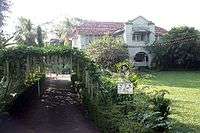
The Rev. J.H. Marsh, Snr served as the first headmaster of the Colombo Academy. With the appointments of J.F. Haslam in 1948 the post of the head of the Academy was renamed the principal, which continues to this day. J.C.A. Corea became the first Ceylonese (Sri Lankan) principal when he took office in 1946.
Alumni
Past pupils of Royal College Colombo are known as Old Royalists, and include many distinguished figures. The school produced the first Executive President of Sri Lanka J. R. Jayewardene; the longest serving President of the Maldives Maumoon Abdul Gayoom;[16] the last Sultan of the Maldives Muhammad Fareed Didi;[17] and three Prime Ministers of Sri Lanka, including General Sir John Kotalawela and Ranil Wickremesinghe as well as the first Ceylonese Acting Governor, Sir James Peiris.[53][54]
Many of the prominent leaders of the independence movement in the early twentieth century, including Anagarika Dharmapala, E.W.Perera, Sir James Peiris, Sir Ponnambalam Arunachalam, Sir Ponnambalam Ramanathan and C.A. Hewavitharne, were educated at the Colombo Academy.
The school's alumni also include Shirley Amerasinghe (President of the United Nations General Assembly), Gamani Corea (Secretary-General of the UNCTD), Christopher Weeramantry (Vice President of the International Court of Justice), Sir Nicholas Attygalle (first Sri Lankan vice chancellor), V. K. Samaranayake (founder of the UCSC), Mohan Munasinghe (Vice Chairman of the IPCC) and General Deshamanya Sepala Attygalle (first Sri Lankan four-star general).
.jpg)
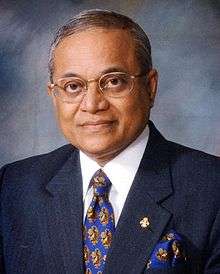


 Ranil Wickramasinghe Prime Minister
Ranil Wickramasinghe Prime Minister
Royal College Union
The Royal College Union (RCU) is the alumni society (old boys' association) for the college. Founded in 1891, it is the oldest such alumni society in Sri Lanka. The Royal College Union was set up to further the interests of the college and its past and present members, and to keep former pupils in touch with each other and with the school. Annually the RCU organizes many sporting events including the Royal-Thomian, the Bradby Shield Encounter, the Royal Thomian Regatta, as well as national initiatives such as EDEX and carrying out development projects for the college.
Royal and other schools
Royal College maintains a century old rivalry with S. Thomas' College, Mount Lavinia as well as close ties with Trinity College, Kandy.
In 1945, Minister of Education C. W. W. Kannangara began the establishment of central colleges (Madhya Maha Vidhyala) as part of the Free Education policy to provide secondary education for the rural masses. He modeled these schools on the general structure of Royal College.
Although there are several schools in the island which have adapted the name Royal College in the post-independence era even after Sri Lanka became a republic in 1972, none have links to Royal College Colombo.
In popular culture
- In Martin Wickramasinghe's novel Kaliyugaya which was made into a film by Lester James Peries, the character Allan is an old Royalist.
- In the last part of Carl Muller's trilogy Once Upon a Tender Time, the central character Carlaboy von Bloss of the final story studies at Royal.[55]
- In Nihal De Silva's novel The Giniralla Conspiracy, protagonist Mithra Dias studied at Royal College, as did antihero Kumudu Prasanna.
- In Martin Wickramasinghe's novel Yuganthaya which was made into a film by Lester James Peries, the character Malin is an old Royalist.
- In Madhubahashini Disanayaka Ratnayaka's novel There is Something I Have to Tell You, one of the main characters Janendra "Janu" Samarawickrama is an old Royalist.
Lineage
| Hill Street Academy | ||||||||||||||||
| Colombo Academy | ||||||||||||||||
| Queens College | ||||||||||||||||
| Royal College Colombo | ||||||||||||||||
| Royal College | ||||||||||||||||
| Royal Preparatory School | ||||||||||||||||
See also
Publications
- Perera, S.S., History of Royal College
- Fernando, M.L., History of Royal College – 1985 to 2010[56]
- Seneviratne, D.L., The Royal College "School of our Fathers" (Colombo, Lake House)
References
- ↑ Wakista, Dulakshi (30 November 2011). "Awareness on cyber security for schools". The Island (Sri Lanka).
- ↑ "Royal College Cadet Band wins championship". The Nation (Sri Lanka). 12 August 2012.
- ↑ "'Sobha 2012'; National Environment day celebrations held at Royal College". Royal College Union.
- ↑ "Peterite domination continues in schools Tennis for 5th consecutive year". Sunday Times (Sri Lanka). 24 July 2011.
- ↑ "Students get great help from e-Sri Lanka: Royal College Principal". Sunday Times (Sri Lanka). 28 June 2009.
- ↑ Kannangara, Ananda (14 September 2008). "JRJ's 102nd birth anniversary on Sept. 17". Sunday Observer (Sri Lanka).
- 1 2 "Sri Lanka's 'Eton' celebrates its 175th birthday". BBC News. 6 February 2010.
- ↑ Pinnawala, Chathura (17 July 2012). "Dynamic Trinity take wind out of Royal's unbeaten sails". The Island (Sri Lanka).
- ↑ "We will learn of books and men and learn to play the game". The Island (Sri Lanka). 14 July 2012.
- ↑ "Colombo Academy becomes Royal College". Sunday Times (Sri Lanka). 30 July 2006.
- ↑ "History of 'The Bradby Shield'". The Nation (Sri Lanka). 8 June 2008.
- ↑ "Microsoft puts Royal College among world's most innovative schools". Sunday Times (Sri Lanka). 8 November 2009.
- ↑ "The day the Royalists stole the Thomian Thunder: Guneratne Trophy '92". Daily FT. 14 July 2012.
- ↑ Razak, Rukshan (1 July 2012). "Trinity retain the Bradby". The Island (Sri Lanka).
- ↑ "Royal College fetes eminent past products". Sunday Observer (Sri Lanka). 1 July 2012.
- 1 2 3 "Youth who serve the nation can look back with pride in future – President".
- 1 2 Chris Abdul-Wahhab. "Maldive students at Royal College Colombo 1920s".
- ↑ Royal College among world’s best schools: Royal remains supreme, by Samangie WETTIMUNY
- 1 2 Royal - from Beira Lake to man-made swimming pool
- ↑ "Royal college salutes the Royalist war heroes, by Commodore Shemal Fernando, RSP, USP, MSc, psc, SLN".
- ↑ "We will learn of books and men and learn to play the game".
- 1 2 Historical Overview of Education in Sri Lanka, The British Period: (1796 - 1948 )
- ↑ "FIRST HEADMASTER".
- ↑ "Those good ole days!".
- ↑ Structure of the Education System, Ministry of Education
- ↑ [books.google.lk/books?ISBN 8180690423 Accounting Education in South Asia]By K.R. Sharma. Pg:109
- ↑ An epitome of English education in Sri Lanka
- ↑ "Conquering the skies".
- ↑ "Ceylon's first flights".
- ↑ "House for a College and University: Its hundred years since its foundation laying".
- ↑ Thurstan College 55th Founder's Day - Jan. 11
- ↑ May 22: Sri Lanka's Republic Day, Sundayobserver
- ↑ PREFECTS AND STEWARDS
- ↑ Devotion and sacrifice: secret of success, Head Prefect of Royal college speaks of his challenging school career
- ↑ "131st Battle Of The Blues".
- ↑ "Returning to original sin: Whither Lanka's Test Cricket?".
- ↑ "Unique stamp for a unique event".
- ↑ "The College History". S. Thomas Old Boys Association.
- ↑ "OBA History". S. Thomas Old Boys Association.
- ↑ "Battle of the Blues".
- ↑ "The Royal – Thomian - 130 Years on".
- ↑ S. Thomas' College
- ↑ "Oldest Thomian Cricketer late Punchi Banda (Artie) Lankatilleke - JP".
- ↑ "A Tribute to C.E.L. ("Kalla") De Silva on his 100th Birth Anniversary".
- ↑ The Royal Thomian Derby
- ↑ "Himalayan expedition by Royal College Adventure Club students".
- ↑ Royal to present Saga V plus at BMICH
- ↑ On behalf of all her sons and daughters...
- ↑ "Young Royalists take on the challenge of Jekyll and Hyd".
- 1 2 3 4 "A royal magazine".
- ↑ Royal College Magazine Online Website
- ↑ "Royal College Magazine".
- ↑ PEACE AT LAST IN PARADISE, Ananda Guruge p.213 (AuthorHouse Publishing) ISBN 9781463418373
- ↑ Chapter 5: SRI LANKA: THE UNTOLD STORY, K.T.Rajasingham Asia Times Retrieved 7 November 2015
- ↑ Sir Christopher Ondaatje looks back at the importance of Carl Muller’s Trilogy
- ↑ "Need for students to acquire skills to face life confidently, says President's Secretary".
External links and sources
| Wikimedia Commons has media related to Royal College, Colombo. |
- Official
